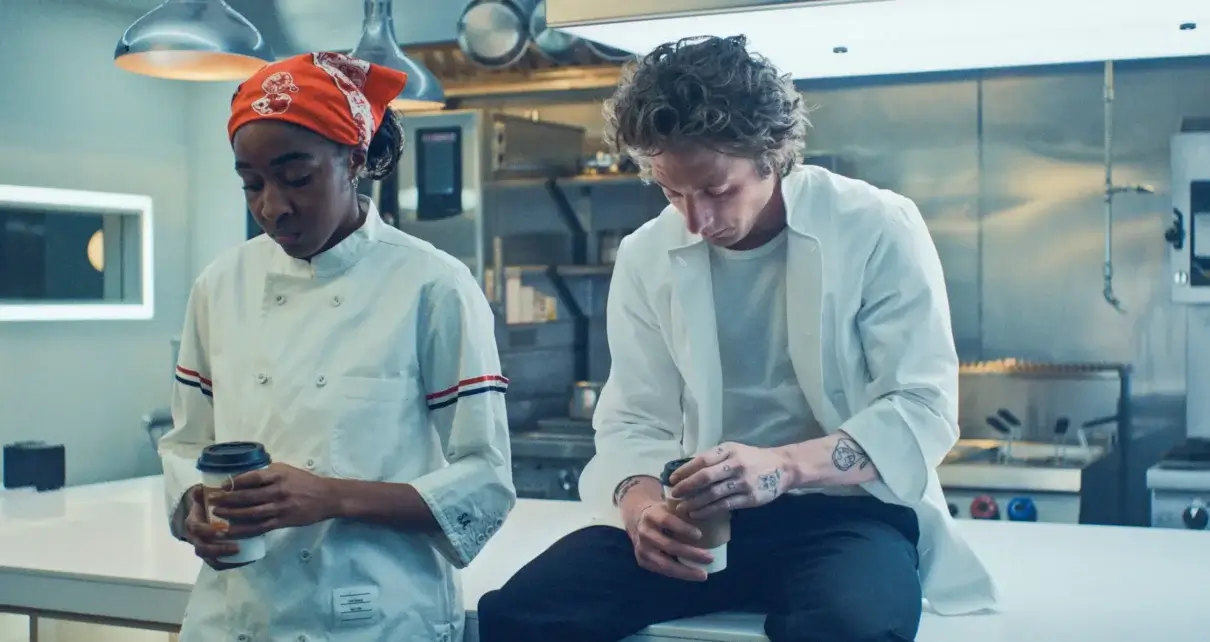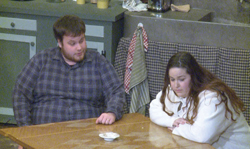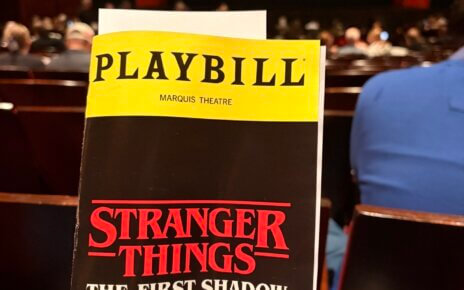Food, friends, family, and fighting. Four f-words that are more prominent than the first to come to mind in FX’s hit series, “The Bear.” The first two seasons of Christopher Storer’s masterpiece consisted of a topic not many were knowledgeable about, the restaurant industry. The ideas for this show were so singular that it made the whole world watch and listen. But “The Bear’s” newest season serves less than its previous ones. Season three brings back the characters, actors, and technical elements that make it unique, but one of the things this season that falls short is its writing.
Season one followed the before. Before The Bear, there was The Beef, and viewers were able to watch it grow, or mostly tumble, under Carmy’s (Jeremy Allen White) takeover after the death of his brother, Mikey (Jon Bernthal). Season two consisted of the transition into The Bear and the challenges that came with this alteration. The last episode of season two followed the opening night of The Bear and ended with its characters all deploying different emotions and reactions to this accomplishment.
Season three, as expected, follows the after, but without the expected time jump. Viewers are thrown into the next morning after opening night. A morning explored in episode two titled “Next.” The lack of time jump is effective to an extent, as viewers can see the immediate effects of episode ten in season two, titled “The Bear.” But this stylistic decision was not met without any flaws. When we see Carmy, he explains how he has quit smoking and has picked up nicotine gum to save time, a theme that is still as evident as ever in the new season. This decision makes sense, but it is a big one for him in eight hours, as Carmy has been rarely, and I mean rarely, seen outside without a cigarette.
The lack of cigarettes included in Carmy’s character contradicts his stunted character growth throughout this season. Over the past two seasons, viewers have watched Carmy gain some confidence in his craft and take over his brother’s business the best that he can. He even gained a girlfriend, Claire (Molly Gordon) in the process, something not common for Carmy is his fast-paced life. It was great to explore more sides of Carmy, ones that include his life away from the kitchen, but season three strips this all away. We see Carmy go back to his old ways at the end of season two, but he continues this decline into the new season. Even the kitchen seems to be going backward, camera shots are seen that mimic the ones from season one of messes and destruction. It seems as if the “dysfunctional kitchen” is back, but then at the same time, “show me a functional one.”
This could have changed in episode ten of season three titled “Forever,” when Carmy is finally face to face with his biggest demon, Chef David Fields (Joel McHale), but instead, he is put down again, and again by Fields. During the whole duration of the story of “The Bear,” Carmy has shown immense PTSD from Fields but has nonetheless pushed through and built a restaurant from the ground up. This opportunity was so important to his character development, but it was just executed so poorly. This build-up of this scene consisted throughout the first two seasons, and when it happens, viewers can’t help but be disappointed.
The character of Carmy lacked this season, but Jeremy Allen White was seen at his best. White embodies Carmy in a way that I believe no other actor could. His body language and big-eyed stare are important to the character of Carmy, a man who constantly second-guesses himself while being the most educated among his peers. White’s performance is perfectly complimented by his co-star, Ayo Edebri. Edebiri’s portrayal of Syd is always one that brings me great joy to see. The playfulness she brings to the ensemble is so charming, her character is truly my favorite to watch. Her contrast to Carmy in season one was so interesting to see, but as the seasons moved on, she was almost starting to become like him. Living alone, working too hard, and even having a panic attack at the end of the season, demonstrating how her job is making her mentally unwell.
Ebon Moss-Bachrach played an equally important role to White and Edebiri this season, helping lead The Bear with confidence and pride, something new to Moss-Bachrach’s character of Richie. This shows what Richie learned in Season two’s “Forks,” stuck with him and made him a better person, unlike any lessons Carmy learned.
Throughout season three, time is still an issue at the core of the plot. The kitchen is still equipped with its “every second counts” sign, an aspect is not going anywhere. It’s even heightened this season with Carmy’s anxiety to get this restaurant a Michelin star, an idea orchestrated by Syd, even though she soon becomes the biggest opposer to the plan. Her distaste for Carmy’s strategies are quite ironic due to it being her idea in the first place. This stress floats over the whole season, creating conflict and tension among its already tense staff.
While season two was known for its episode “Fishes,” season three should be known for its episode “Ice Chips.” What is common in both of these episodes? The standout role of Jamie Lee Curtis as Donna Berzatto. Her look, emotions, and acting create the most anxiety-inducing character I have ever seen on screen. Her presence induces more fear out of me than “Shiva Baby.” Donna is a mess, and it’s something viewers can figure out before even meeting her. Her children all deploy various elements of dysfunction, all stemming from their mother. The decision to cast Curtis as Donna will go down in history, truly no other actor could have done what she did. Besides stressing out its viewers, “Ice Chips,” explores parent-child relationships at their most vulnerable, as depicted through Donna supporting, or at least trying to, Sugar as she goes into labor with her first child. The episode explores topics of family trauma, shown through beautiful conversations between the two characters shot with minimal camera techniques to highlight the authenticity of this conversation. Viewers can see one of the most anticipated moments of the show and it was better than expected. But sadly, “Ice Chips” will not be season three’s “Fishes” and this is all because although family was the center of the episode, it was not explored in its greatest potential. The episode never shows the entire “The Bear” group coming to the hospital to visit Sugar, despite the incredible tightness of the Berzatto family. An odd decision since the family had suffered the loss of one of their own not too long ago. Wouldn’t a new life being added to the family be the thing that would help them all come back together? It’s a missed opportunity in my book.
But what’s the episode that will be its new “Fishes?” That will have to be episode six, “Napkins.” Episode six centers around Tina, played by the wonderful Liza Colón-Zayas. It explores her backstory and her purpose, much like “Forks.” Colón-Zayas’ Tina is wonderful, and fans are relieved they finally get to have more of her. Learning that Tina’s purpose in life is The Bear brings so much light to viewers. We learn that she has loved, lost, and found herself in her lifetime, and she will not be leaving The Bear any time soon. Another highlight of this episode is that it is directed by their very own Edebiri, her first time behind the camera.
Despite all of this, my biggest critique of this season is the overbearing role of the Faks. The Fak cousins were a loving addition to the show in its previous seasons, but they were just over the top in it’s current one. The two added comedic moments in the beginning, but they soon became overdone and exhausting. The show even went to the extent of adding a new Fak cousin, Sammy Fak, portrayed by John Cena. Cena did not portray the qualities of a Fak and took me out of the show every time he was on screen. The Faks could have been saved if the writers used them in a Shakespearean comedic character way, using them to lighten the mood of the story and teach a lesson to the audience through their wit and unexpected banter. But instead, they just turned out to be annoying.
An element of “The Bear” that never misses is its soundtrack. The first five episodes of this season started with a majority of symphonic pieces, giving the show an almost “2001: A Space Odyssey” feel. But as the episodes progressed, the usual “The Bear” style soundtrack returned. The show always employs music that aids the story and contains some of the music’s best. This season sees hits by Adrianne Lenker, Carole King, Smashing Pumpkins, Stevie Nicks, Radiohead, The Ronettes, and of course, R.E.M. Music always aids this show to the highest extent, never imploring a song that feels out of place.
Paired with its acting and music, “The Bear’s” strongest element is its cinematography. Andrew Wehde does an outstanding job of capturing the world of “The Bear” with stills that could be their own art form, much like food can be. Wehde makes the world of “The Bear” look like a place out of a painting, something larger than life, even though the show’s focus is on real people and real-life experiences.
Also, an amazing touch this season was the inclusion of actual chefs. Some of the fictional chefs in this season were portrayed by some of the industry’s most notable. True foodies could recognize individuals such as Dave Beran, Daniel Boulud, Paulie James, and even Christopher Zucchero, the owner of Mr. Beef, the real restaurant that inspired “The Bear’s,” The Beef. Episode two titled “Next,” consisted of a montage of real-life restaurant workers playing under the on-screen credits, paying homage to the real people who live the life of “The Bear” and giving credit where credit is due.
I didn’t hate this season, like, at all, but when the ones before it are near if not perfect, it’s easy to get a little picky. It’s undercooked, but undercooked food is still edible. Hopefully, season four will pick up where this season lacks, wrapping up this incredible show and showing its fans that any dish is best served with a little more care.




